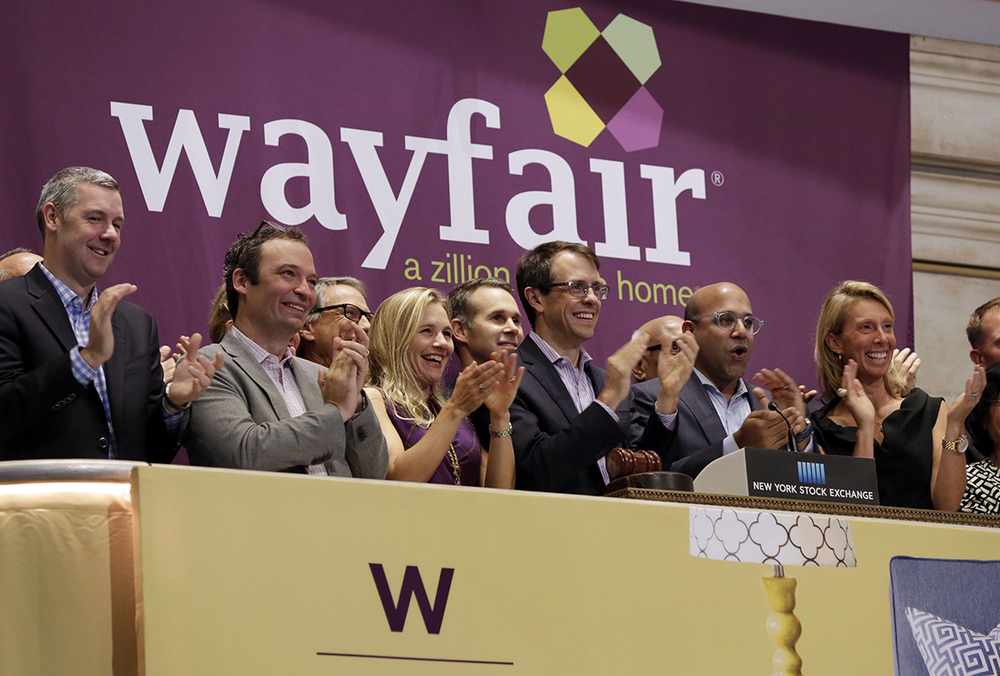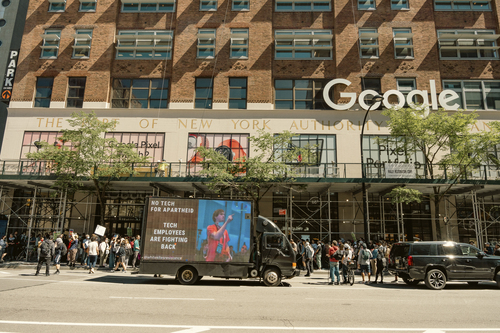The Google Firings: a Signal of a ‘Course Correction’ on Corporate Dissent
For corporate America, it has been a historic experiment in free speech. For a time, big employers showed a growing tolerance of workers speaking out on social and political issues–with even company leaders making bold pronouncements on emerging issues.In 2017, for example, workers spoke up about sexual harassment as part of the #MeToo movement. In 2020, they made their opinions known about racial justice after the murder of George Floyd. In response, many employers made changes to the status quo, updating hiring policies, investigating misconduct, setting up employee resource groups (ERGs), and holding discussions on world events. Some even formed “social issues working groups” to respond thoughtfully to emerging controversies.But the latest cultural flashpoint, the Israel-Hamas war, has not settled in quite the same way. Rather than spurring policy changes and public forums, the tension around this issue has prompted in-office protests and arrests. The politics that moved into the office in 2017 never moved out, but the tenor of today’s conflict–at least in the workplace–is different.In a signal event last month, Google fired 50 employees who took part in sit-ins to protest the company’s contracts with the Israeli government. Nine of them were arrested for trespassing. Google CEO Sundar Pichai sent out an email to staff declaring that work is not a place to “fight over disruptive issues or debate politics.” In another high-profile case, long-tenured National Public Radio reporter Uri Berliner accused the platform of imbalanced reporting on the conflict in a published essay. Berliner was suspended and later resigned.One implication of the corporate response is that the organizational embrace of dissent, especially on polarized issues, is reaching its limits. John Higgins, who researches and writes about employee activism, believes employers are giving the public an “X-ray” of their corporate culture. “I find it fascinating how [Google] created a corporate culture where a sit-in was the only way that the employees thought they could be heard, and the only management response they could imagine was to fire everybody,” Higgins told From Day One. “Everybody’s been talking about dialogue in organizations for decades, and that is not dialogue. That is a straight power play. The question is, where will this end?” The trend so far, notably among tech companies who earlier made a point of projecting their progressive values, is that “we’re seeing a course correction across the board,” Fortune editor-at-large Michal Lev-Ram told CNBC this week.The corporate confrontations echo the conflict over the same issue on college campuses, which has turned violent to the point of stealing media attention from the underlying crisis in Gaza. As students and faculty members demand that universities divest from their interests in Israel, as well as cut ties with organizations that do business in Israel, several universities have responded aggressively, which has affected not just students but also the people who work there: faculty and staff.Nadia Abu El-Haj, a professor at Barnard College and Columbia University, believes that by asking New York City police to intervene with pro-Palestinian protesters on campus, Columbia’s administration lost the confidence of its own faculty. “That decision was the last straw: it galvanized faculty who otherwise not only had no involvement in pro-Palestine politics but in some cases actively disagreed with the students,” she said in an interview with the New York Review.Faculty members have reportedly been arrested at Stony Brook University, the University of North Carolina at Chapel Hill, Virginia Tech, Washington University, and California Polytechnic Institute, not to mention student arrests across the U.S., which now number in the thousands. At Emory University, at least one professor was handcuffed, while a teacher at Dartmouth College described her arrest as “brutal.”Where Will the Crackdown Lead?“The firings at Google, I think, are a sign of the zeitgeist,” said Alison Taylor, a clinical associate professor at New York University’s Stern School of Business and author of the new book Higher Ground: How Businesses Can Do the Right Thing in a Turbulent World. In 2024, companies don’t need workers as desperately as they did just a few years ago. Job openings in the U.S. sank to a three-year low in March and quit rates declined as well. As power shifts from employees back to employers, many companies are clawing back power.Overall, the evidence is mounting that it doesn’t benefit companies to get involved in public discourse that’s going to split their stakeholders, Taylor told From Day One. “My strong impression is that people running companies are somewhat regressing because [getting involved] looked very convenient when it was Trump and climate change and immigration, but when it’s reproductive rights and Gaza, it is much less convenient.”“How quickly the pendulum swings,” wrote journalist and author Joanne Lipman in a post on LinkedIn. Lipman, who is currently a lecturer in political science at Yale, underscored the marked change in employer-employee relations. “Just a few years ago, in the wake of #MeToo and George Floyd’s murder, companies accommodated and sometimes supported protesting employees. Contrast that with today, when companies have had it with restive workers, and are cracking down on them instead.”Lipman has been a front-line witness to the about-face. As she continued on LinkedIn: “I happened to be at Google’s headquarters to give a talk on Nov. 1, 2018, the day of an historic company walkout to protest sexual harassment and workplace culture. The crowd was massive, permitted to assemble, and the company ultimately met some ... of its demands. A very different vibe last week, when Google fired 50 employees involved in a far smaller protest.”Of course, an exact comparison can’t be squarely drawn. The case could be made that employers can exert a greater impact on sexual harassment or discriminatory practices in their own workplace than on war overseas. The Economist made the case that even if major universities were to divest from their interests in Israel, the effect would be largely symbolic and have little to no effect on the actions of the Israeli government, Google’s Nimbus Project being an obvious exception.The events on college campuses and in tech-company offices reflect the coarser political climate writ large. Polarization in public is bleeding into polarization in the workplace. “The inability to seek out compromise and to seek out dialogue within Google is in itself a parallel process with the wider political discourse within the country,” said Higgins. ‘It Was Clear That Things Were Going to Get Pretty Messy’As early as 2018, Taylor was warning that the corporate-activism trend would not end well. “Scapegoating is inevitable,” she wrote for Quartz. By being outspoken advocates of one thing or another, companies were casting themselves in the role of public officials–and, alongside public officials, were blamed for polarization, terrorism, privacy violations, racism, and extremism. The problem is that businesses can’t necessarily do much about, say, terrorism.At the time, “short-term controversy around a political issue [was] a small price to pay for overall approval from the public and media,” she wrote. That’s no longer true. Backpedaling from overt involvement in public discourse, companies are now more likely to comment only on matters they can directly influence. But the precedent has been set, and workers are taking out their frustration on businesses. Transparency, once the mantra of companies and their publicly charismatic executives, has often been their undoing, especially when there’s a disconnect between their words and their actions.How inevitable was this clash? Precipitating events, like the Oct. 7 attack in Israel, aren’t necessarily predictable, at least by business leaders. But if it weren’t this particular event, it would be something else, Taylor argues. “Once companies have opened up this avenue of activism, an avenue of leaders speaking up, an avenue of leaders taking positions on things, then it was clear that things were going to get pretty messy, pretty quickly,” she told From Day One.How Companies Might Better Handle Differences of OpinionBy firing the sit-ins, the message was clear, Higgins said: Don’t tell us anything we don’t want to hear in a way we don’t want to hear it. “What Google has reinforced is very traditional command-and-control.” In his estimation, the company would be better served to ask, How can we all live with our disagreements?“Businesses do not operate in a vacuum,” Higgins said, and they should stop behaving as if they do. Unless they are willing to engage with their workers–sans terminations and law enforcement–leaders will trap themselves in their own echo chambers and ultimately drive discontent underground. “People will become extremely skilled at telling senior management what they want to hear. Meanwhile, they will get on with doing what they need to do.” As the leadership team grows increasingly out of touch with its workforce, discretionary energy will be funneled into maintaining a placid façade rather than innovating. Volcanic activity, of course, begins underground.Taylor doesn’t envision a return to an earlier time in which battles over politics were fought only in the political arena, no matter how much employers may want it. “Younger generations do not see the world this way, and then [companies] opened up Pandora’s box. It’s pretty hard to go back to the way things were.”Companies would be ill-advised to dismiss the agitations of younger generations, who are the harbingers of change. “They tell you about what’s shifting in social attitudes, and that tells you what your customers are going to value,” said Higgins. Instead, workers and employers must become comfortable with disagreement.“If two people never disagree, it means at least one of them is not thinking critically or speaking candidly, and that means both of them are failing to learn from the exchange that might happen between them,” organizational psychologist Adam Grant told Anne McElvoy on The Economist Asks podcast in 2022. “I think a lot of us are taught to argue to win; I think what we ought to be doing is arguing to learn.”Coloring the culture wars is “binary bias,” in which the people who agree with you are good and those who don’t are bad. “I think that’s really interfering with progress,” Grant said on the podcast. Where there are only good guys and bad guys, compromise is as bad as capitulation—and neither side wants to be defeated.In his Free Press essay, Berliner lamented that “diversity of thought” was unimportant in the NPR newsroom. This, he argued, has cost the institution the trust of the public.It could end this way, Higgins estimates: Companies continue to sort themselves into “red” companies and “blue” companies and workplaces will become more homogenous and further entrenched in their beliefs. “By and large, people will increasingly join companies that align with how they view organizations fitting in the world: those companies which see themselves as having a social role and those that say, ‘We are explicitly not going to play that game.’”But the only way out, he said, is curiosity. “How this will end, I hope, is that if people are serious about engaging with collective intelligence, if people are serious about taking organizational agility seriously, they have to double down on learning how to walk toward contention and difference.”Emily McCrary-Ruiz-Esparza is a freelance journalist and From Day One contributing editor who writes about business, work, and women’s experiences in the workplace. Her work has appeared in the Economist, the BBC, the Washington Post, Quartz, and Fast Company.[Featured photo: Tech workers from Google, Meta and Amazon protested against Big Tech supplying Israel with intelligence tools outside Google offices in Manhattan on April 16. Photo by Cristina Matuozzi/Sipa USA via AP Images]




